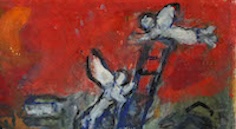Diversion and Disfigurement: Reading Dan Billany (Deceased)
DOI:
https://doi.org/10.57009/am.92Keywords:
Dan Billany, experimental novel, British fiction, publication history, reader reception, avant-gardeAbstract
In this essay I discuss the disfigured and rupturing internal structures of the two posthumous novels of Dan Billany (1913-1943), The Cage (1949) and The Trap (1950). Written, but never completed, while Billany was interned in a POW camp in Italy, they were put together and published as books from a mess of personal papers long after their author had died. Each novel offers a searching examination of both the author function and the reader function. I suggest that their publishing history is a critical background against which the texts signify, and that the processes by which these novels coagulated from scraps of fiction and personal documents into "novels" generate layered permutations of textual meaning. I conclude by exploring the problematic effects of texts which, in terms of "truth-value," lead the reader through myriad text-world layers to a sense of irreconcilable fragmentation.Published
How to Cite
Issue
Section
License
Copyright (c) 2019 The Author(s)

This work is licensed under a Creative Commons Attribution 4.0 International License.
Authors who publish with Affirmations agree to the following terms:
1. Authors retain copyright and grant the journal right of first publication, with the work simultaneously licensed under a Creative Commons Attribution License that allows others to share the work with an acknowledgement of the work's authorship and initial publication in this journal.
2. Authors are able to enter into separate, additional contractual arrangements for the non-exclusive distribution of the journal's published version of the work (e.g., post it to an institutional repository or publish it in a book), with an acknowledgement of its initial publication in this journal.
3. Authors are permitted and encouraged to post their work online (e.g., in institutional repositories or on their website) prior to and during the submission process, as this can lead to productive exchanges, as well as earlier and greater citation of published work. (See The Effect of Open Access.)


